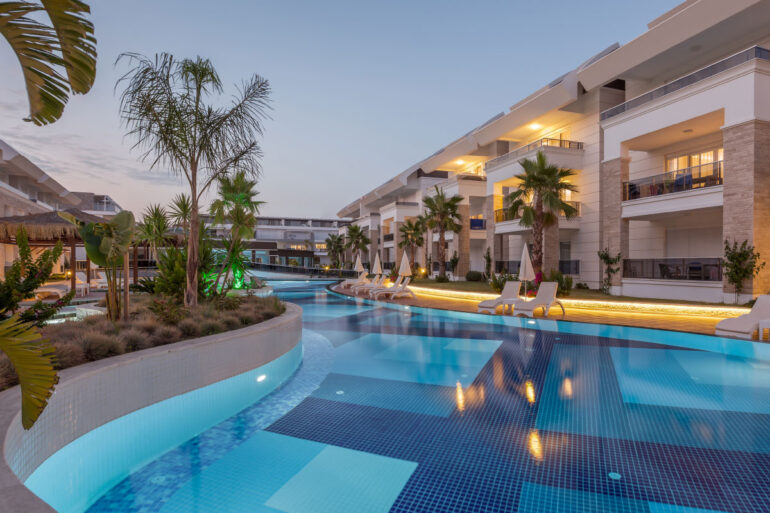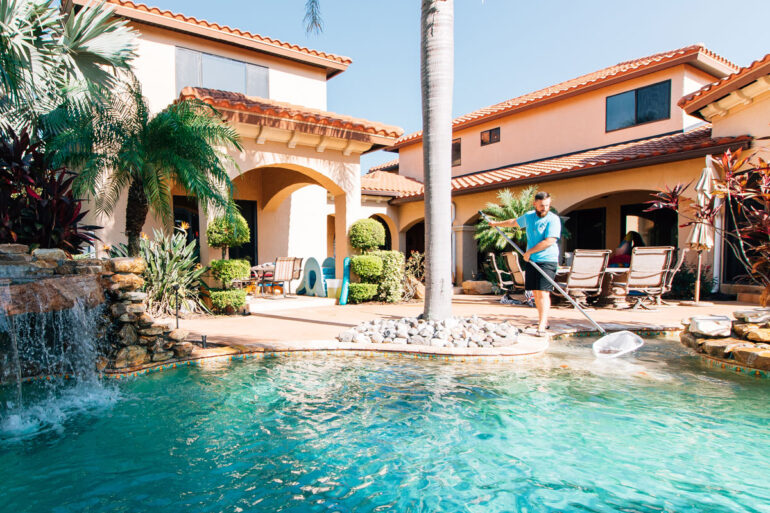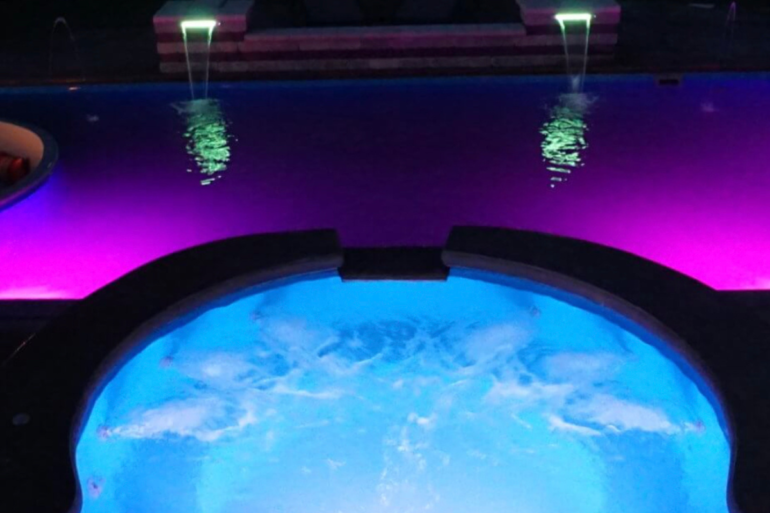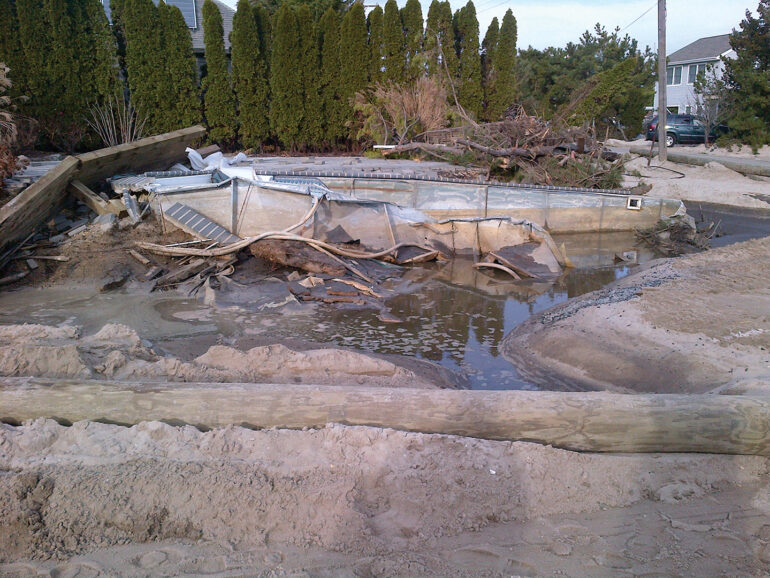Fiberglass Pools to the Rescue Post-COVID
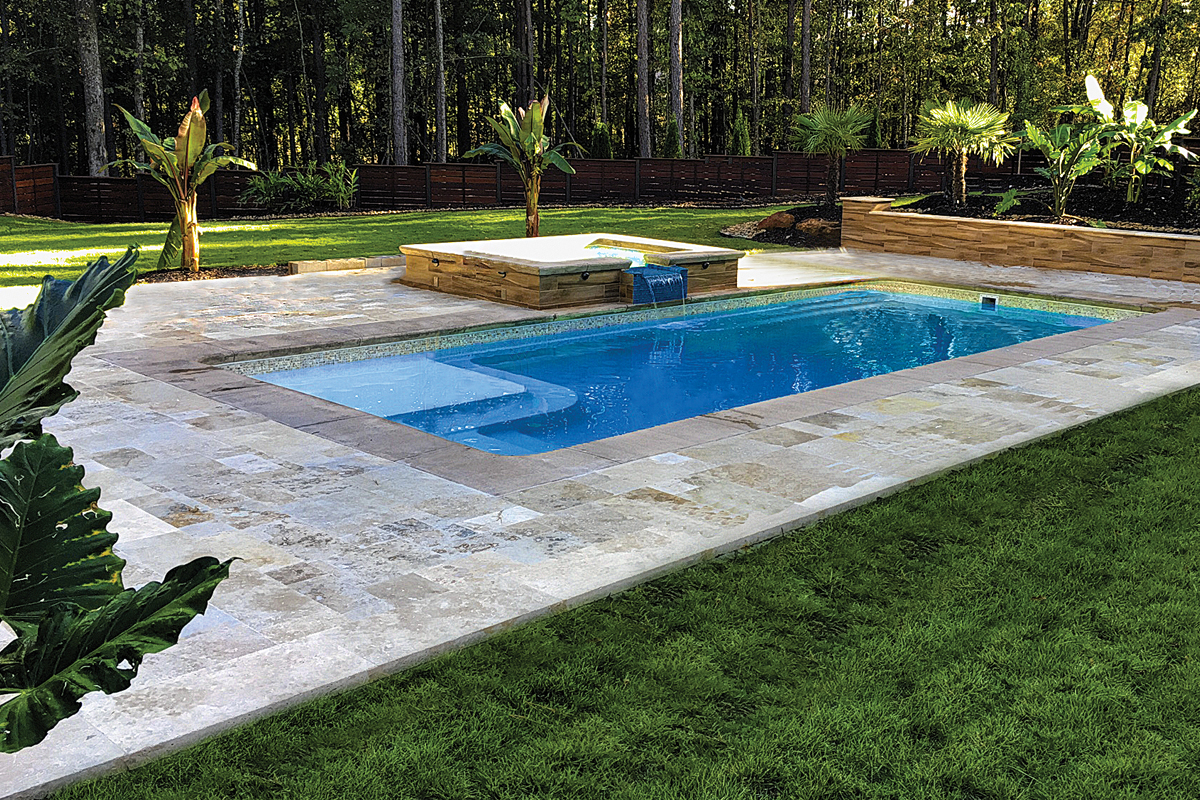
Pool professionals are adjusting to social distancing measures during COVID-19. But pool pros are expert adapters — to labor shortages, rain-soaked springs or anything that makes the building and swimming season shorter. The industry continuously looks for ways to service and install more pools in less time, using the least amount of labor — maximizing every moment of daylight in the summer.
This year will be no exception. Homeowners have been stuck indoors and are looking to do more in their yards — especially this summer, which will likely be the ultimate staycation.
“The dealer network has had a severe case of whiplash,” says Kirk Sullivan, president of San Juan Pools, a Florida-based fiberglass pool manufacturer. “Everybody had high hopes for the 2020 new pool season. Then in February/March, when nobody had toilet paper, everybody figured the earth was coming to an end and the pool season was in ruins.”
The COVID-19 pandemic put a damper on the work pool professionals had planned this spring. However, as restrictions ease and stay-at-home rules are lifted, pool professionals can capitalize on pent-up-consumer demand.
“We haven’t really slowed down as a result of COVID-19,” says Ed Tallman, president of Custom Fiberglass Pools, a manufacturer in Jonesboro, Georgia. “In fact, we are on track to have our best year ever. Homeowners are anticipating cancelled vacations and opting to invest in their homes and backyards, which is great news for the pool industry.”
As pool professionals start receiving calls asking how quickly consumers can get a swimming pool installed, both builders and service professionals are looking at fiberglass pools to help ensure they maximize the number of pools they can install in this shortened season.
After the stimulus and Payment Protection Plan programs Sullivan says, “Suddenly the local pool builder with an immediate opening is now the most sought after commodity in the country. We’re going to break records this season.”
More installations in less time
More and more builders have added fiberglass pools to their offering because it takes far less time to get homeowners swimming in a fiberglass pool than either a gunite or vinyl-liner pool. Service professionals looking to expand into building also consider fiberglass pools as a starting point.
“Fiberglass pools are a great way for pool builders, landscapers, service companies and contractors to meet the growing demand [for pool installations],” Tallman says. “They have the lowest learning curve for installation and can be installed in a fraction of the time it takes to build a gunite or vinyl liner pool.”
Fiberglass pools don’t require the skilled labor of a gunite or vinyl-liner pool, nor do they command the higher price tag of gunite. Today’s fiberglass pools offer all the features consumers demand these days: large tanning ledges, beach-entry designs and even sunken living areas.
“Unlike fiberglass pools of the past, today’s fiberglass pools not only have the multiple shapes, sizes and features homeowners want but also have improved construction features that give builders an easy-to-install pool for maximum profit,” says Ed Vondell, COO of Thursday Pools, a manufacturer of fiberglass pools in Indiana. “We have worked hard to add patented features specifically to ensure pool professionals are able to install our fiberglass pools quickly and without error.”
Jason Branco, owner of Aqua Med Pools in Massachusetts, had previously sold and installed both vinyl-liner and gunite pools, but chose to start installing fiberglass pools. He says he needed to install more pools per summer to be profitable.
Branco says a vinyl-liner pool can be completed in two to four weeks. “This compares to a fiberglass pool that will take one to two weeks, including the deck and fencing,” he says, adding that gunite pools can take up to eight weeks and involve much more labor.
Vinyl-liner and gunite pools are subject to variables that fiberglass pools are not, making fiberglass easier to schedule and plan in a shortened season with limited labor.
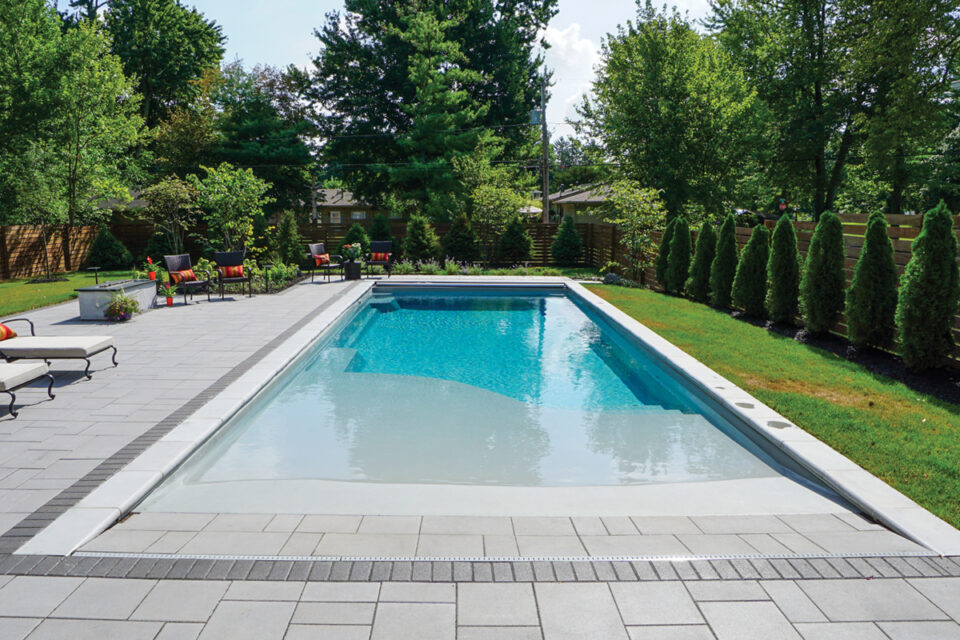
Install with smaller crews
Fiberglass pools can also be installed with fewer workers than a vinyl-liner or gunite pool.
“Fiberglass jobs make it very easy for my crew to stay organized and efficient,” Branco says. “I have three- to five-person crews, and I’m on all the jobs. We can do more fiberglass installations in a year than we can do vinyl-liner installations.” He says this has added to his company’s ability to do more service work as well. Fiberglass pools require fewer people to install and without the skilled labor required for other pool types, he says, whereas it takes a more skilled person to form a vermiculate bottom for a vinyl-liner pool or someone with the finishing skills required for gunite pools.
Not only are pool builders adding fiberglass to their offerings, but many service professionals have also found it easier to start building pools because of the features and benefits of fiberglass pools.
Michael Berggren, owner of Berggren’s Backyard Oasis in north central Washington state, decided to start building fiberglass pools because, “it pretty much guarantees a perfect installation in far less time.” He says his company already knew about pool equipment, plumbing and hydraulics and were tired of fixing other builders’ mistakes, “so we decided to get into pool building ourselves.”
In terms of placing the pool, most pros installing fiberglass pools are using the same excavator that digs the hole to also move and place the pool in the ground. Using an excavator eliminates the need to rent expensive cranes, that tend to only be needed in tight spaces where excavators can’t drive onto the property. “Our company works to combine our fiberglass pool order into a multi-pool shipment so we can then prepare all the holes while the pools are in transit, then drop all the pools in the same day as they are being delivered,” Branco says. “It’s very time efficient.”
Install in virtually any temperature
Unlike vinyl-liner or gunite pools, fiberglass pools can be installed in virtually any temperature. As long as you can dig the hole, you can install a fiberglass pool. This is not the case with vinyl-liner or gunite pools, where colder temperatures won’t allow you to hang a pool liner or shoot gunite.
Not only do cold temperatures and rain delay the installation of a vinyl-liner or gunite pool, but high water tables and freeze-thaw conditions also affect how quickly they can be installed. However, this does not apply to fiberglass pools, Branco says.
“You can install fiberglass pools when it’s really cold, which you can’t do with liners,” he adds. “You also don’t need to worry about vermiculite bottom issues including high-water tables.”
Fiberglass pools have the longest installation season, allowing pool professionals to schedule installations late into the fall and early winter as well as early the following spring. Additionally, installers can have much better control of their scheduling of installations and won’t be delayed by rain.
Easy to sell designs and maintenance
It is important to remember that today’s more popular pool design features are those with tanning ledges, beach entries and large steps, which require a lot of backfill for their installation. Fiberglass pool manufacturers are integrating design features to ease the installation process for builders.
“Knowing that the trend in pool designs is going toward pools with resort-style features, we at Thursday Pools created what we call the Backfill Eliminator, or BFE, which is a patented optional feature created to make the installation process easier and faster for builders,” Vondell says. “Our customers tell us that the BFE saves them a lot of time and headache especially on pools with large tanning ledges and with our latest new beach entry and sunken-living area pool configurations.”
Branco says having features built-in make fiberglass an easy sell. “Whereas on a vinyl-liner pool, all of those features, from steps to tanning ledges, are all extra and the liner quickly becomes a custom job, adding time to the order and ultimately to the installation,” he says.
Oftentimes, selling the fiberglass comes down to reminding people of the maintenance costs of other pools. “What I do is remind the customer of the investment in the pool — both initial upfront cost and longer-term maintenance costs — over a 20-year period,” Branco says. “When you factor in at least one to two liner changes and the possibility of tears from bad winters, the amount of time you’ll have to wait to get the liner repaired or replaced, the cost of the fiberglass pool isn’t all that expensive, relatively.”
Branco says it’s a hassle to change a liner, especially for young homeowners. “If you need a liner changed, especially after a severe winter, you might have to wait one to two months just to find an installer to put in a new liner, and that’s a lot of swimming time lost here in New England,” Branco says.
In addition to the many resort-style designs of fiberglass pools, they are also well suited for automatic pool covers. Automatic covers may be in high demand this summer, too, as consumers aim to extend the swimming season to make the most of their staycation investment.
Set yourself apart from competitors
Many pool professionals are adding fiberglass pools not only to offer homeowners more choice but also to differentiate themselves.
“I really started to get serious about fiberglass pools once I realized that offering fiberglass pools would really set me apart from my competition — which in this area is heavily vinyl-liner and gunite,” Branco says. “The fiberglass pool is more expensive than vinyl liner, especially because of the large number of builders doing vinyl-liner installations in my area — but that price has never really been an issue because of all the other benefits I’m able to as offer my clients over purchasing a vinyl-liner pool.”
“We have found our customers are choosing fiberglass pools at a really rapid rate, and our sales of fiberglass pools are growing much faster than vinyl-liner or gunite pools,” says David Burton at Burton Pools in Arkansas, a more than 40-year-old company that builds all three pool types. “A very large percentage of the fiberglass pools people are choosing are those with the large tanning ledges and sitting areas with benches,” he adds.
Competition will be fierce this summer after COVID-19 quarantines are lifted, so it will be important to stand out with offerings to maximize profits and avoid competing on price. “Resort-style beach entry fiberglass pools and new sunken-living room options from Thursday Pools will help us stand out from our competitors,” Burton says.
Jonathan Hendrick, owner of Hendrick Pool & Lawn in Indiana, has been building pools for more than 35 years and also installs both vinyl-liner and fiberglass pools. “Consumers always want to have something different than their neighbors,” Hendrick says. “Fiberglass is actually a better solution when it comes to shallow areas, especially for tanning ledges and beach-entry pools as you don’t need to worry about what furniture is brought into that area or how long the dogs nails are that run into that shallow zone that can tear in vinyl-liner pools.”
Offering high-end, resort-style features in a fiberglass pool that can be installed quickly in any temperature is going to ensure pool professionals get more jobs this year. This can also extend the installation season into this fall and winter and even allow construction to begin earlier next spring. Pool professionals agree that being lean, mean and efficient this summer is the way the industry can make up for lost profits from the pandemic. Fiberglass pools offer the features and benefits pool professionals need to make the most of this year’s shorter, post-COVID-19 installation season.

